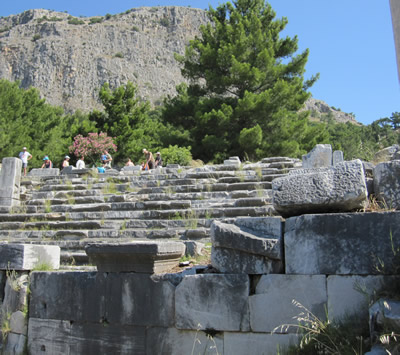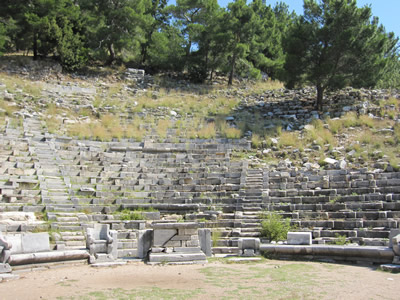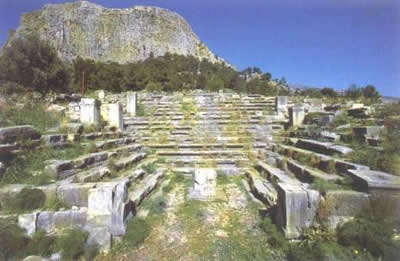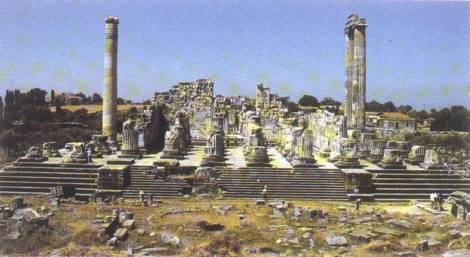
Classic Turkey trip, 2012
PRIENE-DIDYMA-MILET
HOME :
turkey trip Istanbul I Istanbul II Istanbul III Istanbul IV Bursa Troy Pergamum Sardes - Pamukkale Aphrodisia Ephesus Priene Didyma MiletCapitels
Priene belonged to Miletus in ancient times and was an important port. Additionally, the city was strategically located on top of a rather steep hill. All these factors either lost their importance over time or disappeared due to the changes in topography. The country around Milet and Priene is shaped by the Maeander river and over time the river deposited more and more silt until evenually not only did the port become unusable, but Priene is located quite far from the ocean. Eventually, the city was abandoned, probably after being damaged by earthquakes. Consequently, archeologists consider Priene the Greek Pompeii because its ruins contain an intact original Greek city frozen in time without the architectural changes imposed by Roman, Byzantine or Ottoman rule.
|
|
|
||
| The Bouleterion (sort of a city hall) of Priene Here the citizens would meet and vote and/or listen to famous orators. However, to ensure that orators did not exceed their allotted time there was a timer, based on dripping water that would let the speaker known when his time was up. I wonder whether it worked better with the citizens of Greek Priene than with some academics I recall! | ||||
| Priene had ready access to marble quarries and EVERYTHING - even the streets - were made of marble. Looked good, until the earthquakes came. Turkey is earthquake country and between the frequent earthquakes and the even more frequent wars, everywhere there is a lot of broken marble. Below is the temple of Athene and five columns are standing up but only because they were carefully reconstructed a few decades ago. | ||||
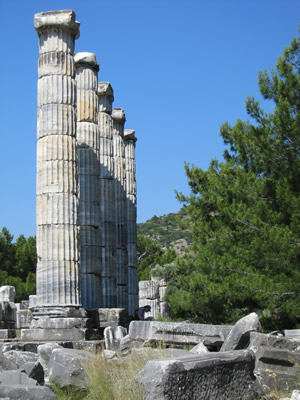 |
The Temple of Athene |
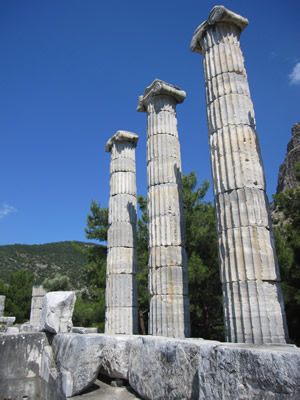 |
||
| Ruins, ruins, nothing but Greek ruins! |  |
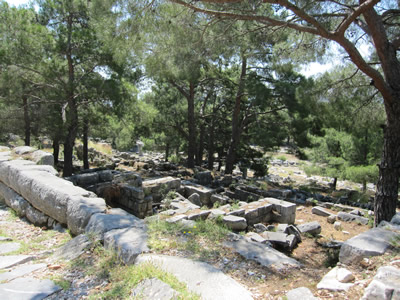 |
||
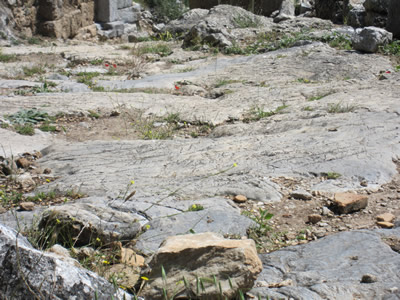 |
 |
The paths up and down the mountain not only quite steep, but are covered with marble fragments, making it imperative that one watches carefully where one steps | ||
Miletreturn to top
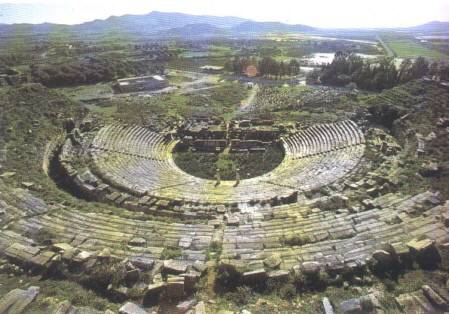 |
 |
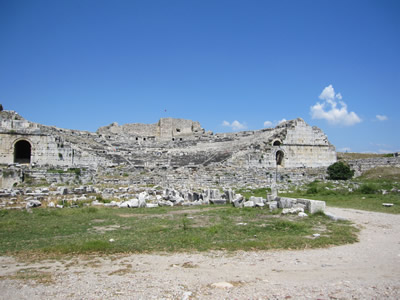 |
||
| Miletus was the ruling city of the Caria province due to its important port - Priene. Archeological evidence shows that its roots go back into Neolithic times. It was part of the Ionic League during the Hellenistic era and it is one of the cities visited and mentioned by the Apostle Paul. However, eventually silt from the Meander river filled the bay and Milet's port became only a memory. | ||||
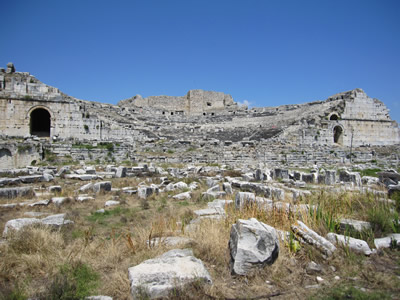 |
 |
Milet is also famous for the philosphers who were active here during the hellenistic era. Gathered around Thales of Milet (born 628 BCE), they were the first to explore the world from a naturalistic, scientific point of view, rather than relying of mytheological thinking. Thales who predated Aristotle, is considered by many to be the first Western philosopher.
|
||
| Milet. as all cities in Western Anatolia was largely built out of marble, which just doesn't look so good once the earthquakes and wars | ||||
 |
have taken their toll. Today Milet is a sleepy tourist attraction and archeological research site. Of special note is its impressive theather, see above and to the left. Like the good tourists that we are we climbed all over the theater and through the ruins of the old town. Among other attractions Milet has a large Greco-roman stadium, and we visited its excavated gymnasion . On the left the plan for the Faustina therme of Milet. | 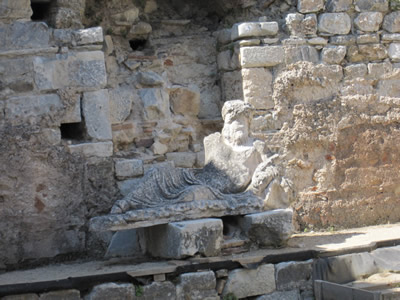 |
||
| Above right is a statue of a reclining warrior in the warm water pool (tepidarium) area. Around the theater and gymnasion complex one can wander (stumble) over and through the ruins of the old city. One of its most famousattractions once again is not there. During one of the first excavations in the 19th century, the ruins of "Market gate of Milet" were discovered and piece by piece | ||||
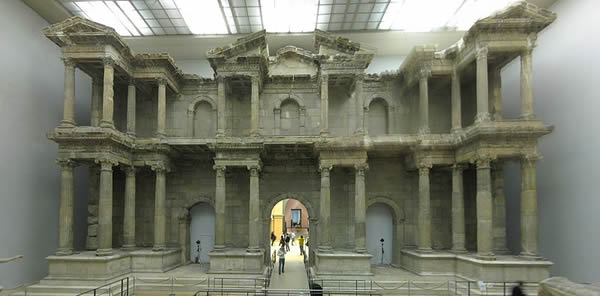 |
moved to Germany. There they were pieced back together and became one of the important attractions of the Pergamum Museum together with the Pergamum Altar and the Ishtar Gate of Babylon. So, if you want to see the gate - look to the left or go to Berlin. Other artifacts found at Milet can be seen in the Milet museum in Didyma | |||
Didyma return to top
 |
 |
 |
||
| The Apollo Temple and Oracle of Didyma was the most important cult site of the ancient city of Miletus. Next to Delphi, Didyma was the most renowned oracle of the Hellenic world, first mentioned among the Greeks in the Homeric Hymn to Apollo. During the invasion by the Persians | ||||
 |
The temple was destroyed but rebuilt after Alexander the Great' reconquest of the area. The aerial view of the Apollo Temple (center above) makes it clear what a huge complex it was. In the center (also in the picture on the right) one can discern the remains of the area where the faithful would come to bring gifts and ask for the Oracle's advice. Only the priests were permitted access to the large area behind the offertorium. |
|
||
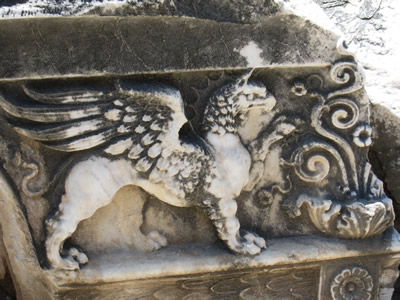 |
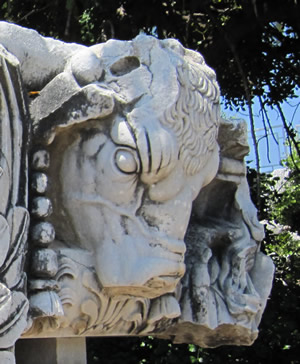 |
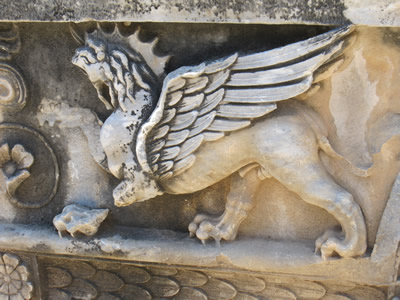 |
||
| We were particularly fascinated by the elaborate and beautiful carvings of fanciful creatures on the temple columns and walls. In the middle a particularly beautiful stone carving of the Medusa |  |
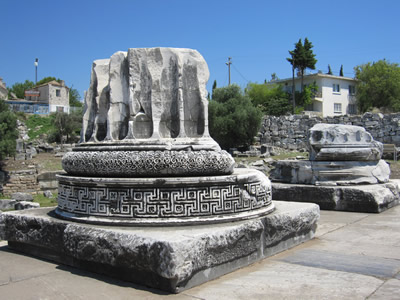 |
||
